
Unlock a More Youthful You With Testosterone Replacement Therapy In Port Colden, NJ
Aging is inevitable, and for many, it signals the beginning of a new chapter - one where you cross off bucket list items and live life to the fullest, on your own terms. However, for some men, aging is a horrible prospect, filled with chronic fatigue, irritability, and inability to perform in the bedroom. If you're concerned about life in middle age and beyond, we've got great news: there are easy, proven steps that you can take to help stop the negative effect of aging.
Global Life Rejuvenation was founded to give men a new lease on life - one that includes less body fat, fewer mood swings, and more energy as you age. If you're ready to look and feel younger, it's time to consider TRT (testosterone replacement therapy), and growth hormone peptides. These therapies for men are effective, safe, and customized to fit your goals, so you can keep loving life as you get older.
TRT, and growth hormone peptide therapies bridge the gap between your old life and the more vibrant, happier version of you. With a simple click or call, you can be well on your way to a brighter future. After all, you deserve to be the one in charge of your wellness and health. Now, you have the tools to do so - backed by science and applied by our team of TRT and HRT experts with more than 13 years of experience.
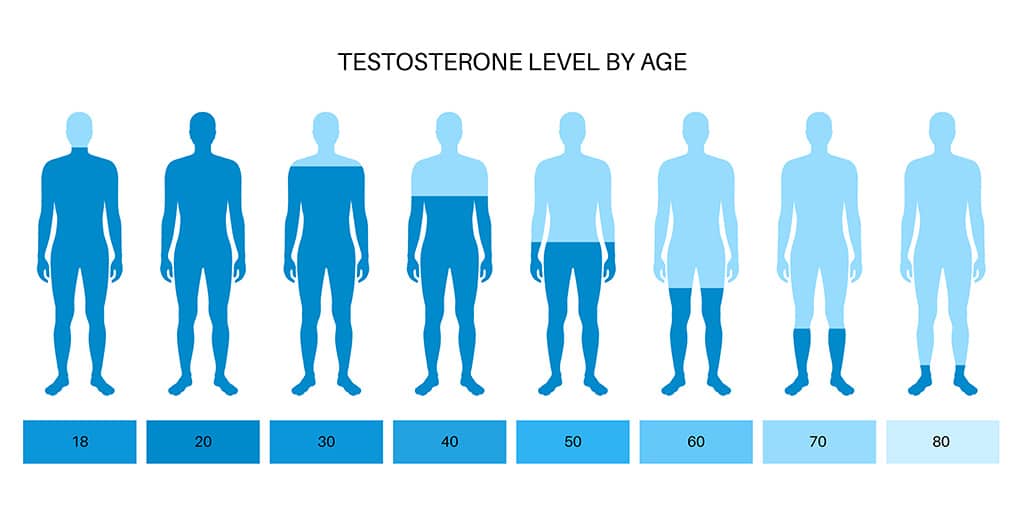
Testosterone Replacement Therapy
- Unlock A More Youthful You With Testosterone Replacement Therapy In Port Colden, NJ
- TRT and Anti-Aging Medicine for Men
- Common Symptoms of Low Testosterone
- Benefits of TRT and Anti-Aging Medicine for Men
- Fight Back Against Male Menopause
- Reverse Aging with Growth Hormone Peptides in Port Colden, NJ
- Your New, Youthful Lease on Life Starts Here
TRT and Anti-Aging Medicine for Men in Port Colden, NJ
For men, getting older comes with its perks, like living life on their own terms and not having to "sweat the small stuff" day in and day out. At the same time, there are aspects of aging that men dread, like hormonal changes. Yes, you read that right – men, not just women, go through hormonal changes as they age. For men, the biggest change involves a drop in testosterone.
Lower levels of testosterone can wreak havoc on a male's mind and body and when left untreated, can result in symptoms like:
- Erectile Dysfunction
- Depression
- Irritability
- Low Sex Drive
- Hair Loss
- Less Muscle Mass
- Problems Concentrating
Those symptoms are concerning, but with testosterone replacement therapy and anti-aging medicine, many males improve their quality of life with age. The good news is that TRT and anti-aging meds aren't only reserved for "old guys." In fact, there's no magic age at which men should start thinking about hormone replacement therapy. Everyone's body is different, so if you're experiencing the above conditions in your mid-30s, TRT could be a viable solution when you consult with a doctor.

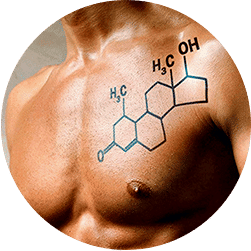
What is Testosterone?
Testosterone is a crucial hormone for men and plays an important role throughout the male lifespan. Most of a male's testosterone is produced through the testicles. Also called the male sex hormone, testosterone starts playing its part during puberty.
When a male goes through puberty, testosterone helps males develop:
- Facial Hair
- Body Hair
- Deeper Voice
- Muscle Strength
- Increased Libido
- Muscle Density
As boys turn to men and men grow older, testosterone levels deplete naturally. Sometimes, events like injuries and chronic health conditions like diabetes can lower testosterone levels. Unfortunately, when a man loses too much T, it results in hypogonadism. When this happens, the testosterone must be replaced, or the male will suffer from symptoms like muscle loss, low libido, and even depression.
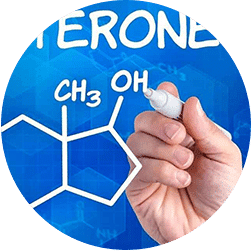
How Does TRT Work?
TRT is exactly what it sounds like: a treatment option for men that replaces testosterone so that your body regulates hormones properly and restores balance to your life. Also called androgen replacement therapy, TRT alleviates the symptoms that men experience with low T.
Originally lab-synthesized in 1935, testosterone has grown in popularity since it was produced. Today, TRT and other testosterone treatments are among the most popular prescriptions in the U.S.
Without getting too deep into the science, TRT works by giving your body the essential testosterone it needs to function correctly. As the primary androgen for both males and females, testosterone impacts many of the body's natural processes – especially those needed for overall health. For example, men with low T are more prone to serious problems like cardiovascular disease and even type-2 diabetes.
When your body quits making enough testosterone, it causes your health to suffer until a solution is presented. That's where TRT and anti-aging medicine for men can help. TRT helps balance your hormones and replenish your depleted testosterone. With time, your body will begin to heal, and many symptoms like low libido and irritability begin to diminish.

What Causes Low T?
For men, aging is the biggest contributor to lower testosterone levels, though there are other causes like obesity, drug abuse, testicular injuries, and certain prescribed medications. Sometimes, long-term health conditions like AIDS, cirrhosis of the liver, and kidney disease can lower testosterone levels.
When a man's testosterone levels drop significantly, it alters his body's ratio of estrogen and testosterone. Lower testosterone levels cause more abdominal fat, which in turn results in increased aromatase, which converts even more testosterone into estrogen.
If you're concerned that you might have low T, you're not alone. Millions of men in the U.S. feel the same way. The best way to find out if your testosterone is low is to get your levels tested.
For sustainable testosterone replacement therapy benefits, you must consult with hormone doctors and experts like those you can find at Global Life Rejuvenation. That way, you can find the root cause of your hormone problems, and our team can craft a personalized HRT plan tailored to your needs.
Common Symptoms of Low Testosterone
Are you used to blasting through a productive day and accomplishing all your daily goals? Do you find yourself losing muscle mass and the craving to be intimate with your partner? Does your partner complain about how irritable you have become? If you're not usually a curmudgeon, your body could be giving you a sign. It could be time to speak with a doctor about TRT and anti-aging medicine for men in Port Colden, NJ.
If you're experiencing any of the following symptoms, you might be battling against low testosterone:

Low Sex Drive
One of the most common reasons that men choose TRT is because they have lost that "spark" with their partner. It's not easy for a man to hear that they're not performing like they used to. Intimacy is a powerful part of any relationship. When a once-healthy sex life dwindles, it can cause serious relationship issues.
The good news is that low libido doesn't have to be a permanent problem. TRT and anti-aging medicines help revert hormone levels back into their normal range. When this happens, many men have a more enjoyable life full of intimacy and sex drive.

Inability to Achieve and Maintain an Erection
Weak erections – it's an uncomfortable subject for many men in the U.S. to talk about. It's even worse to experience first-hand. You're in the midst of an intimate moment, and you can't do your part. Despite being perfectly normal, many men put blame and shame upon themselves when they can't achieve an erection. And while the inability to perform sexually can be caused by poor diet, obesity, and chronic health conditions, low testosterone is often a contributing factor.
Fortunately, weak erections are a treatable condition. The best way to regain your confidence and ability in bed is to speak with your doctor. Once any underlying conditions are discovered, options like TRT may be the best course of treatment.
Hair Loss

Loss of Strength and Muscle Mass
Do you find it harder and harder to work out and lift weights in the gym? Are you having problems lifting heavy items that you once had no problem lifting?
Recent studies show that when men are inactive, they lose .5% of muscle strength every year, from ages 25 to 60. After 60, muscle loss doubles every decade. While some muscle loss is common as men age, a significant portion can be tied to low testosterone levels. When a man's T levels drop, so does his muscle mass.
Testosterone is a much-needed component used in gaining and retaining muscle mass. That's why many doctors prescribe TRT Port Colden, NJ, for men having problems with strength. One recent study found that men who increased their testosterone levels using TRT gained as much as 2.5 pounds of muscle mass.
Whether your gym performance is lacking, or you can't lift heavy items like you used to, don't blame it all on age. You could be suffering from hypogonadism.

Hair Loss
If you're like millions of other men in their late 20s and 30s, dealing with hair loss is a reality you don't want to face. Closely related to testosterone decline and hormone imbalances, hair loss is distressing for many men. This common symptom is often related to a derivative of testosterone called DHT. Excess amounts of DHT cause hair follicles to halt their production, causing follicles to die.
Because hair located at the front and crown is more sensitive to DHT, it grows slower than other follicles and eventually stops growing permanently. Thankfully, TRT and anti-aging treatments for men in Port Colden, NJ, is now available to address hair loss for good.
While it's true that you can't change your genes, you can change the effects of low testosterone on your body. Whether you're suffering from thinning hair or hair loss across your entire head, TRT and other hormone therapies can stop hair loss and even reverse the process.

Gynecomastia
Also called "man boobs," gynecomastia is essentially the enlargement of male breast tissue. This increase in fatty tissue is often caused by hormonal imbalances and an increase in estrogen. For men, estrogen levels are elevated during andropause. Also called male menopause, andropause usually happens because of a lack of testosterone.
If you're a man between the ages of 40 and 55, and you're embarrassed by having large breasts, don't lose hope. TRT is a safe, effective way to eliminate the underlying cause of gynecomastia without invasive surgery. With a custom HRT and fitness program, you can bring your testosterone and estrogen levels back to normal before you know it.

Decreased Energy
Decreased energy was once considered a normal part of aging. Today, many doctors know better. Advances in technology and our understanding of testosterone show that low T and lack of energy often go hand-in-hand.
If you're struggling to enjoy activities like playing with your kids or hiking in a park due to lack of energy, it could be a sign of low T. Of course, getting tired is perfectly normal for any man. But if you're suffering from continual fatigue, a lack of enjoyment, or a decrease in energy, it might be time to speak with a doctor.
Whether you're having a tough time getting through your day or can't finish activities you used to love, TRT could help.

Lack of Sleep
A study from 2011 showed that men who lose a week's worth of sleep can experience lowered testosterone levels – as much as 15%, according to experts. Additional research into the topic found almost 15% of workers only get five hours of sleep (or less) per night. These findings suggest that sleep loss negatively impacts T levels and wellbeing.
The bottom line is that men who have trouble sleeping often suffer from lower testosterone levels as a result. If you find yourself exhausted at the end of the day but toss and turn all night long, you might have low T.
TRT and anti-aging medicines can restore your T levels back to normal, which can help you sleep better with proper diet and exercise.

Depression
You're feeling down about everything, and there's no solid explanation for why you're in such a crummy mood. Your daily life is great and full of success, but you can't help but feel unexcited and unmotivated. If you're experiencing symptoms like these, you may be depressed – and it may stem from low testosterone.
A research study from Munich found that men with depression also commonly had low testosterone levels. This same study also found that depressed men had cortisol levels that were 67% higher than other men. Because higher cortisol levels lead to lower levels of testosterone, the chances of severe depression increase.
Depression is a very real disorder and should always be diagnosed and treated by your doctor. One treatment option gaining in popularity is TRT for depression. Studies show that when TRT is used to restore hormone levels, men enjoy a lighter, more improved mood. That's great news for men who are depressed and have not had success with other treatments like anti-depression medicines, which alter the brain's chemistry.

Inability to Concentrate
Ask anyone over the age of 50 how their memory is, and they'll tell you it wasn't what it used to be. Memory loss and lack of concentration occur naturally as we age – these aren't always signs of dementia or Alzheimer's.
However, what many men consider a symptom of age may be caused by low testosterone. A 2006 study found that males with low T levels performed poorly on cognitive skill tests. These results suggest that low testosterone may play a part in reducing cognitive ability. If you're having trouble staying on task or remembering what your schedule is for the day, it might not be due to your age. It might be because your testosterone levels are too low. If you're having trouble concentrating or remembering daily tasks, it could be time to talk to your doctor.
Why? The aforementioned study found that participating men experienced improved cognitive skills when using TRT.

Weight Gain
Even though today's society is more inclusive of large people, few adults enjoy gaining weight as they age. Despite their best efforts, many men just can't shed the extra pounds around their midsections, increasing their risk of heart disease and cancer.
Often, male weight gain is caused by hormone imbalances that slow the metabolism and cause weight to pile on. This phase of life is called andropause and happens when there is a lack of testosterone in the body. Couple that with high cortisol levels, and you've got a recipe for flabby guts and double chins.
Fortunately, TRT treatments and physician-led weight loss programs can correct hormone imbalances and lead to healthy weight loss for men.
Benefits of TRT and Anti-Aging Medicine for Men in Port Colden, NJ
The benefits of hormone replacement therapy for men are numerous. TRT not only grants relief from low-T symptoms but can help give protection against age-related diseases. Additionally, doctors now recognize male testosterone as an important role in alleviating depression.
Some of the most exciting benefits of TRT can include:
- Reduction in Body Fat
- Increased Strength
- More Muscle Mass
- More Energy
- Lower Risk of Erectile Dysfunction
- Higher Sperm Production
- Healthy Reproductive Tissues
- Lower Risk of Heart Disease and Diabetes
- Lower Risk of Anxiety
- Lower Risk of Depression


Fight Back Against Male Menopause
Because men do not go through a specific period of hormonal changes like women do (called menopause), many doctors refer to "male menopause" as androgen decline. This is just another term for low testosterone, but like female menopause, the symptoms can be serious and affect your quality of life.
The best way to fight back against male menopause is with male HRT treatment from Global Life Rejuvenation. We provide the following HRT treatments for men:
- Testosterone Replacement Therapy (TRT)
- Sermorelin (Sermorelin Acetate)
- Human Growth Hormone (HGH)
Our treatment options are personalized for your body and are available as creams, gels, injectables, and implantable pellets. To find out if testosterone replacement therapy is safe for you, contact Global Life Rejuvenation today to schedule your comprehensive testing and anti-aging treatment consultation.
Reverse Aging with Growth Hormone Peptides in Port Colden, NJ
Growth hormone peptides are an innovative therapy that boosts the natural human growth hormone production in a person's body. These exciting treatment options help slow down the aging process and give you a chance at restoring your youth.
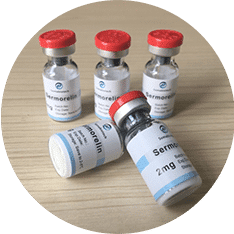
What is Sermorelin?
Sermorelin is a synthetic hormone peptide, like GHRH, which triggers the release of growth hormones. When used under the care of a qualified physician, Sermorelin can help you lose weight, increase your energy levels, and help you feel much younger.

Benefits of Sermorelin
Human growth hormone (HGH) therapy has been used for years to treat hormone deficiencies. Unlike HGH, which directly replaces declining human growth hormone levels, Sermorelin addresses the underlying cause of decreased HGH, stimulating the pituitary gland naturally. This approach keeps the mechanisms of growth hormone production active.
Benefits of Sermorelin include:
- Better Immune Function
- Improved Physical Performance
- More Growth Hormone Production
- Less Body Fat
- Build More Lean Muscle
- Better Sleep
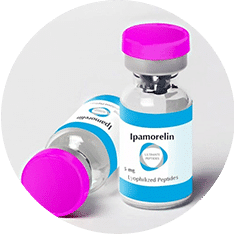
What is Ipamorelin?
Ipamorelin helps to release growth hormones in a person's body by mimicking a peptide called ghrelin. Ghrelin is one of three hormones which work together to regulate the growth hormone levels released by the pituitary gland. Because Ipamorelin stimulates the body to produce growth hormone, your body won't stop its natural growth hormone production, which occurs with synthetic HGH.
Ipamorelin causes growth hormone secretion that resembles natural release patterns rather than being constantly elevated from HGH. Because ipamorelin stimulates the natural production of growth hormone, our patients can use this treatment long-term with fewer health risks.

Benefits of Ipamorelin
One of the biggest benefits of Ipamorelin is that it is suitable for both men and women. It provides significant short and long-term benefits in age management therapies, boosting patients' overall health, wellbeing, and outlook on life. When growth hormone is produced by the pituitary gland using Ipamorelin, clients report amazing benefits.
Some of those benefits include:
- Powerful Anti-Aging Properties
- More Muscle Mass
- Less Unsightly Body Fat
- Deep, Restful Sleep
- Increased Athletic Performance
- More Energy
- Less Recovery Time for Training Sessions and Injuries
- Enhanced Overall Wellness and Health
- No Significant Increase in Cortisol
Your New, Youthful Lease on Life Starts Here
Whether you are considering our TRT services, HRT for women, or our growth hormone peptide services, we are here to help. The first step to turning back the hand of time starts by contacting Global Life Rejuvenation.
Our friendly, knowledgeable TRT and HRT experts can help answer your questions and walk you through our procedures. From there, we'll figure out which treatments are right for you. Before you know it, you'll be well on your way to looking and feeling better than you have in years!
 866-793-9933
866-793-9933
Request a Consultation
Latest News in Port Colden, NJ
Even the Wildwoods are at risk. Here are N.J.'s 10 most endangered, historic sites for 2019.
Bill Duhart | For NJ.comhttps://www.nj.com/news/g66l-2019/05/a5690c3be69212/even-the-wildwoods-are-at-risk-here-are-njs-10-most-endangered-historic-sites-for-2019.html
Photo Provided | Preservation New JerseyPreservation NJ this week released its latest list of the 10 Most Endangered Historic Places in the Garden State. The list highlights historic, architectural, cultural, and archaeological resources that the group feels are in imminent danger of being lost.It was generated from nominations by the public with a goal of finding creative solutions."Several challenges face properties on this year’s endangered sites list, including neglect and deferred maintenance, thre...
Photo Provided | Preservation New Jersey
Preservation NJ this week released its latest list of the 10 Most Endangered Historic Places in the Garden State. The list highlights historic, architectural, cultural, and archaeological resources that the group feels are in imminent danger of being lost.
It was generated from nominations by the public with a goal of finding creative solutions.
"Several challenges face properties on this year’s endangered sites list, including neglect and deferred maintenance, threats incurred by redevelopment and new construction, difficulties raising adequate historic preservation funding, and the need for creative adaptive reuse proposals," the group said. "Half of the sites on this year’s list are owned by government, highlighting a recurring theme of neglect by entities entrusted by the public with the care of our historic resources."
Photo Provided | Preservation New Jersey
East Point Lighthouse
East Point Lighthouse, built in 1849, is the second oldest existing lighthouse in New Jersey. It underwent a full restoration two years ago but is still threatened, PNJ said. Located in an area where Maurice River enters the Delaware Bay in Cumberland County, the land near the lighthouse is rapidly eroding. The erosion has already washed out the protective dunes and the stewards of the lighthouse are left with sandbag brigades in an attempt to hold back tidal waters and storm surge.
"While the site owner, the State of New Jersey, is currently studying mitigation alternatives, they need to act more expediently to protect this National and State Register of Historic Places listed site before it is gone forever," Preservation NJ siad.
Photo Provided | Preservation New Jersey
Isaac Corwin House
In 1829, James Topping, a master cabinetmaker and owner of an iron mine, purchased the Isaac Corwin House, which was built in 1800, and surrounding 53 acres of land in Chester Borough, PNJ said. In 1945, the house and property were sold to Willis Larison and became Larison's Turkey Farm Inn. Chester Borough has agreed to demolish the Corwin house and another historic structure as part of an affordable housing lawsuit settlement, PNJ said.
"The plight of the Isaac Corwin House is reflective of a larger issue related to the State’s refusal to actively manage its obligation to ensure the creation of adequate affordable housing," the group said.
Photo Provided | Preservation New Jersey
Lackawanna Train Terminal
The Lackawanna Train Terminal opened in 1913 and was designed by William Hull Botsford, who was on the Titanic the year before, PNJ noted. It was a hub for the Delaware, Lackawanna and Western Railroad between Hoboken and Montclair. A developer has proposed knocking down the terminal to double the size of a parking lot, the preservation group said.
"The Montclair Historic Preservation Commission has attempted to communicate the importance of maintaining the structures within the new site plan; but unfortunately, the Montclair Planning Board approved the site plan including the demolition of a significant portion of the train sheds," the group said.
Photo Provided | Preservation New Jersey
Lee Brothers Park Pavilion
The Lee Brothers Park Pavilion, located on Lake Hopatcong, is a "unique surviving example of lake-style recreational architecture in New Jersey," PNJ said. Brothers, Clarence J. Lee and Edwin Lee, purchased the 10-acre property in 1919, when Mount Arlington was a major tourist destination. When Clarence Lee's son decided to retire in 1995, he donated the property to Morris County so that the pavilion the family built and surrounding park land would be preserved and not be subdivided into a lakefront development. But the structure has steadily deteriorated since, the preservation group said.
"The County has demonstrated its support of this site by including funding for its stabilization over several budget cycles totaling more than $1 million dollars to date; yet, the County has not taken any other steps to ensure the preservation of the building," the group said.
Historic fires station in Milltown is on this year's most endangered historic site top-10 list. (Photo Provided | Preservation New Jersey)
Historic firehouses
Today’s fire engines, ladder trucks, and ambulances are much larger and heavier than their predecessors, and as a result, many historic firehouses cannot fit modern emergency equipment. This has created a preservation crisis in some of these buildings, PNJ said.
"We know that these structures can be adaptively reused for a number of functional and interesting purposes, such as libraries, offices, restaurants, bars, and even homes," the group said, noting a situation in Milltown Borough, where they are undergoing a $12 million project to construct a new firehouse and public works facility "with no commitment as to the future of the community’s two historic firehouses."
Photo Provided | Preservation New Jersey
Port Colden Manor
The 1835 Port Colden Manor is a" provincial example of Greek Revival architecture built by William Dusenberry in 1835," the preservation group said. The building became a boarding school for girls in the mid-18th century, was used for local school district offices for much of the 20th century, and then was converted into professional offices in the 1980s.
"The current owner has made some minimal repairs while they negotiate with the township for approval to convert the structure into apartments; which at this time, seems to be at an impasse," Preservation NJ said.
Photo Provided | Preservation New Jersey
United States Animal Quarantine Station
The United States Animal Quarantine Station in Clifton, also known as the Ellis Island for animals, was developed between 1900 and 1907 to "temporarily isolate foreign animals along the East Coast in order to safeguard the nation's livestock and poultry against diseases of foreign origin," PNJ said. It was used until air travel in the 1950s made a new facility near Stewart Air Force Base more practical. Clifton acquired the property in 1966. "While several buildings are being actively used by the city, local citizens are rallying to save the remaining unused and underutilized buildings on the site but has a long road of fundraising and rehabilitation ahead of them to ensure the site's preservation before the buildings fall victim to demolition by neglect," PNJ said.
Photo Provided | Preservation New Jersey
Park Theater
The Park Theater opened in 1932 as The Passion Play Theatre. It included classrooms, a state-of-the-art stage with a wide screen, an organ, and "an orchestra pit worthy of any grand movie palace of its day," PNJ said. Largely vacant now it is owned by the Archdiocese of Newark, the preservation group said. "The diocese is open to leasing the building to an outside organization willing to take on the project and make it a destination," the group said. "Someone is needed to champion the cause before this architectural and cultural treasure is lost forever."
Photo Provided | Preservation New Jersey
The Wildwoods
The Wildwoods — four municipalities on a barrier island comprising a popular Jersey Shore resort popular for more than a century — are threatened by typical development pressures , PNJ said. In the past two decades, buyers discovered the Wildwoods' lower prices and a building boom has begun to transform the island from Doo Wop motels and older single-family homes into condos and large single-family homes.
The group is urging residents to have their towns establish Historic Preservation Commissions "to prevent the Wildwoods from falling victim to the ever-growing homogeneity of the Jersey shore region, where one municipality is indistinguishable from the rest."
Photo Provided | Preservation New Jersey
Van Ness House
The Van Ness House was built by one of the earliest Dutch families to settle in western Essex County, Simon Van Ness, who brought his family to Fairfield in 1701 and was one of the founders of the Reformed Church of Fairfield in 1720, PNJ said. The house was likely built around 1760 and is a typical 18th century farmhouse in the Dutch brownstone tradition of northern NJ, which predates the Revolutionary War. Currently owned by the Township of Fairfield, the building has now sat vacant for a number of years and the town has said it doesn't have the money to stabilize or maintain it, the preservationist group said.
RELATED: Take a look at the list for 2018
Bill Duhart may be reached at [email protected]. Follow him on Twitter@bduhart. Find NJ.com on Facebook. Have a tip? Tell us. nj.com/tips. Get the latest updates right in your inbox. Subscribe to NJ.com's newsletters. 'Ask Alexa for New Jersey news'
Downtown Hackettstown landmark, First Presbyterian Chapel, set for restoration
Warren Reporterhttps://www.nj.com/warrenreporter/2009/11/downtown_hackettstown_landmark.html
Story Written By Jocelynn ThomasHACKETTSTOWN — The historic First Presbyterian Chapel, located at 291 Main Street and one of Hackettstown’s oldest buildings, is well on its way to restoration to its original grandeur. Thanks to a group of concerned citizens, this historic gem is being preserved for generations to appreciate.As you stroll or drive by, take note of how the Chapel stands today because, beginning this spring, scaffolding will be visible as it undergoes a complete outer restoration set f...
Story Written By Jocelynn Thomas
HACKETTSTOWN — The historic First Presbyterian Chapel, located at 291 Main Street and one of Hackettstown’s oldest buildings, is well on its way to restoration to its original grandeur. Thanks to a group of concerned citizens, this historic gem is being preserved for generations to appreciate.
As you stroll or drive by, take note of how the Chapel stands today because, beginning this spring, scaffolding will be visible as it undergoes a complete outer restoration set for completion by 2011. Funded by a two-year county grant applied for by Preserve Historic Hackettstown and approved last December, work began this March.
Project manager and historic architect John Bolt, whose restoration resume also includes The Shippen Manor and the Old Port Colden Schoolhouse among others, is fervently committed to this landmark’s refurbishment. The building has been deemed structurally sound, and the grant is for the complete external restoration, including tree removal, painting, stabilization, repair and preservation of its original character and grounds.
Charles Prestopine, vice chairman of Preserve Historic Hackettstown, a key advocate for initiating this project, says people who know of the restoration are anxious to know, “When are they starting on the building?”
Much work has already been accomplished relative to the cleaning and stabilization of the bell tower, which still houses the original bell cast in 1820. The plan includes restoration of the four, eight-foot spires that originally graced the top of the bell tower.
The next phase of the project will include final selection of contractors, for which bids have been submitted. All outer detail is hand carved, and renovations must be replicated according to picture documentation. This necessitates selecting the right contractors to do the job.
The original congregation was founded in 1763, on land conveyed from Obadiah Ayers at what was known the Old Yellow Church. For years, this simple building was home to the worshipers until it was rebuilt in 1819 — since known as the “Meeting House” and thus born the chapel that stands today. The steeple developed leaks, however and required subsequent repair and rebuilding in 1838, with the inclusion of distinct spires.
Also of historic note is the adjacent graveyard, where 29 Revolutionary War soldiers are said to be buried. The brutal winters of the Revolution were marked by local heroes, who after trekking miles to deliver reinforcements to troops in Morristown, were paid thanks by George Washington himself here in Hackettstown.
After 1861, the chapel ceased holding services, as members transferred across the street to the current First Presbyterian Church. In the years to follow, lack of funds led to deterioration and neglect of the Chapel, which included moisture and surrounding tree limb damage.
In 1999, the Old Burial Ground Committee, led by Prestopine, began restoration of headstones and the surrounding stone wall. So far, 180 headstones have been reinstated, and two Eagle Scouts have contributed to ensuring completion of rebuilding the surrounding stone walls, after years of damage and degradation.
Today, the chapel continues to serve as a meeting house for various local organizations including the Boy Scouts, the Colonial Musketeers, as well as a place of worship for the Living Water Church.
There are many ways members of the community can support this restoration effort. Contributions can be sent to the attention of the Chapel Fund, c/o Charles Prestopine, 309 High Street, Hackettstown, NJ 07840. The committee has a postcard circa 1908, which serves as a visual aid of how the building stood a century ago. If anyone has records, including any photographs (wedding, special event, or other), memorabilia, or documents in their possession, they would be a welcome addition to the restoration project.
The committee would like to give special thanks to students of the Great Meadows Central School, who every spring and fall, volunteer to clean and maintain the grounds. In addition, they, along with First Presbyterian Church member Gordon O’Hea, and the aforementioned Eagle Scouts, have all made great contributions to rebuilding the surrounding stone wall.
Following its rededication, community members and visitors alike will be able to enjoy one of the original, historic showpieces of Main Street, the First Presbyterian Chapel — an invaluable contribution to the Hackettstown Revitalization movement.
For more information contact Charles Prestopine at 908-852-5941 or visit www.hackettstownhistory.com.
100 Colden Street Will Bring Revitalization to Downtown’s Fringes
Chris Fryhttps://jerseydigs.com/jersey-city-development-100-colden-street/
Jersey City’s westbound development has gotten well-deserved attention this year, with approved projects in Journal Square proving to doubters that big-name builders aren’t just interested in the waterfront anymore. But the western migration of development is also happening Downtown, and one project that will better connect two neighborhoods is up for approval next week.Pegasus Enterprises has put together a new plan for 100 Colden Street, which is on the fringe of Downtown past Liberty Harbor and just steps from the Berge...
Jersey City’s westbound development has gotten well-deserved attention this year, with approved projects in Journal Square proving to doubters that big-name builders aren’t just interested in the waterfront anymore. But the western migration of development is also happening Downtown, and one project that will better connect two neighborhoods is up for approval next week.
Pegasus Enterprises has put together a new plan for 100 Colden Street, which is on the fringe of Downtown past Liberty Harbor and just steps from the Bergen-Lafayette border. The project will combine four lots on the block that are currently occupied by long-vacant warehouses, which will be torn down under the plan.
In their place will be a new 12-story, mixed-use structure with 128 units, 168 parking spaces, a 28,650 square foot retail component and over 60,000 square feet of self-storage space in the building. The development, designed by Hoboken-based Minervini Vandermark, will have a contemporary look that will feature large glass windows on the ground floor storefront that will provide some great natural light.
The proposed development falls within the boundaries of the Bates Street Redevelopment Plan, which was created in 2006 and recently amended by the City Council in September. The plan notes that there are very few historic structures in the neighborhood, which is defined mostly by the modern Jersey City Medical Center and a 1980s-style strip mall with a large parking lot.
Because of this reality, the plan’s stated intentions are to facilitate “high modern, fresh and bold designs that do not reference historic Jersey City architecture.” 100 Colden would fit that bill, as it embraces many elements of current urban style.
The four properties being combined for the project are 11-12 Brook Street, 1-3 Brook Street, 17-23 Bates Street and 114-120 Colden Street. A few of the lots have had proposals approved in the past, but never held any groundbreakings. A project called One Bates Street was green-lit back in 2008, which was pretty much the worst time for a real estate development to gain approval.
There’s also a lot nearby at 460 Grand Street that had a 10-story, 82 residential unit building approved back in July 2015, but no construction activity appears to have taken place at the site. If 100 Colden moves forward, it could perhaps jumpstart those plans and the neighborhood in general. There is a gap of several underutilized properties near the Turnpike extension that could potentially develop into a new neighborhood as land Downtown becomes more scarce.
Time will tell if 100 Colden ends up being a catalyst for the neighborhood’s revitalization, but the new plans for the site will be heard by the Planning Board at their next meeting on December 20th.
[gmap height=”250px”]100 Colden St, Jersey City, NJ 07302[/gmap]
100 Colden St, Jersey City, NJ 07302
Preservation New Jersey announces top 10 endangered historic places in the state
Keldy Ortizhttps://www.northjersey.com/story/news/new-jersey/2019/05/16/endangered-nj-historic-places-here-top-10/3692676002/
A lighthouse from the 1800s and a train terminal rank among the state’s 10 most endangered places.Preservation New Jersey, a nonprofit historic preservation organization, announced its annual list of the state's top 10 endangered historic places. The list highlights cultural, architectural and archaeological places in the Garden State.Lackawanna Train Terminal in Montclair in Essex CountyBuilt in 19...
A lighthouse from the 1800s and a train terminal rank among the state’s 10 most endangered places.
Preservation New Jersey, a nonprofit historic preservation organization, announced its annual list of the state's top 10 endangered historic places. The list highlights cultural, architectural and archaeological places in the Garden State.
Lackawanna Train Terminal in Montclair in Essex County
Built in 1930, the terminal had six tracks for trains coming in from Hoboken. This allowed commuters to travel into New York.
Though there are stores at the terminal, developers have proposed putting in apartments, a supermarket and office and retail space. The preservation group doesn't believe replacing the terminal with apartments is an appropriate redevelopment.
East Point Lighthouse in Township of Maurice River in Cumberland County
Built in 1849, the East Point Lighthouse is located in the Township of Maurice River in Cumberland County. The lighthouse is the second-oldest in New Jersey and is owned by the state.
Water is threatening the lighthouse, the preservation group said. Erosion has washed out dunes used to protect the lighthouse, and the preservation group believes the state needs to explore options to preserve it.
Larison's Turkey Farm in Chester in Morris County
For generations, the location served family-style turkey dinners. Opened in the 1800s, the restaurant was reopened as Larison's Turkey Farm Inn in 2002, then closed in 2005.
The future of the farm remains in doubt, as plans have been proposed to tear it down and build a new restaurant and office and medical buildings.
Story continues below the gallery
Lee Brothers Park Pavilion in Mount Arlington in Morris County
For years, the park pavilion was a tourist destination. The pavilion has since been unused. The preservation group has said the county has so far budgeted over $1 million, but no other steps have been taken to preserve the park.
Passion Play Park Theater in Union City in Hudson County
Performances of the Passion Play at the theater, owned by the Archdiocese of Newark, are put on by the Holy Family Roman Catholic Church, the preservation group said.
The organization is open to the prospect of leasing the building in the hope that it can be restored, similarly to the Loew's Jersey Theatre in neighboring Jersey City.
Port Colden Manor in Washington Township in Warren County
The manor became a boarding school for girls in the mid-18th century, the preservation group said. The building was also used as an office for the local school district.
The owner of the manor has made repairs, the group said, but the township has tried to approve converting the site into an apartment complex.
U.S. Animal Quarantine Station in Clifton in Passaic County
From 1900 to 1979, giraffes, cattle and sheep roamed the station, dubbed the "Ellis Island for animals." The site now houses the Clifton municipal complex.
Story continues below the gallery
Initially the station opened in 1903 and was meant to house imported sheep and cattle.
While poor conditions have plagued the station, the Clifton Historic Quarantine Station Preservation Foundation wants to preserve it.
The Wildwoods in Cape May County
The Wildwoods are a collection of four towns in South Jersey: the city of Wildwood, city of North Wildwood, borough of Wildwood Crest and borough of West Wildwood.
The Wildwoods' municipalities have become popular shore locations for their nearby beaches and boardwalks. After the damage caused by Hurricane Sandy, the preservation organization said restoring older buildings has not been easy. The group said pressure should be put on the local governments within the four municipalities to renovate and preserve the properties.
Van Ness House in Fairfield in Essex County
The house was brought into the township in the early 1700s by Dutch settlers, the preservation group said. It's now owned by the township.
Since the home has been vacant and uninhabitable due to lack of maintenance, the preservation group has said the township should repair it the home.
Historic firehouses statewide
“Today’s fire engines, ladder trucks and ambulances are much larger and heavier than their predecessors, and as a result, many historic firehouses cannot fit modern emergency equipment,” Preservation New Jersey said in a statement. “Communities often respond by re-locating stations, or demolishing historic stations and constructing new. This has created a preservation crisis as these significant buildings of a community’s past are being abandoned or disappearing entirely.”
Plans Underway For Statewide Greenway Connecting Jersey City With Phillipsburg
Jared Kofskyhttps://jerseydigs.com/morris-canal-greenway-request-for-proposals/
Today, one can drive directly from Jersey City to Phillipsburg, a small town along the Delaware River across from Easton, Pennsylvania, using Interstate 78; it takes a little over an hour. However, 140 years before the highway’s construction, transportation of goods between the two communities was an arduous task.As the population of the New York Metropolitan Area grew, and industrialization increased in the Northeastern Pennsylvania mountains with the explosive growth of anthracite coal mining, the Watchung Mountains and the hi...
Today, one can drive directly from Jersey City to Phillipsburg, a small town along the Delaware River across from Easton, Pennsylvania, using Interstate 78; it takes a little over an hour. However, 140 years before the highway’s construction, transportation of goods between the two communities was an arduous task.
As the population of the New York Metropolitan Area grew, and industrialization increased in the Northeastern Pennsylvania mountains with the explosive growth of anthracite coal mining, the Watchung Mountains and the hills of Central New Jersey presented a barrier in delivering the coal to New Yorkers. A need arose for a new method of transportation to connect the Lehigh Canal, which was used to transport coal from present-day Jim Thorpe in Carbon County, Pennsylvania to Easton, with the rapidly growing metropolis to the east.
In the 1820s, construction began on the Morris Canal, a 102-mile waterway that would be built from Warren County, through Sussex, Morris, Passaic, and Essex Counties to the Hudson River waterfront in Jersey City, Hudson County.
According to Robert Goller’s The Morris Canal: Across New Jersey by Water and Rail, when completed in the mid-1830s, “it climbed higher than any other canal ever built”, and included 23 inclined planes and 23 conventional lift locks. A trip on the canal from the Delaware River to the Hudson River would usually last for five days. The canal’s construction forever changed Northern New Jersey and led to the development of communities directly along the canal’s path like Bowerstown, Port Colden, Ledgewood, Boonton, and Wharton. Some homes used by the lock tenders remain standing to this day.
For decades, “the “Morris Canal played a crucial role in the industrial development of New Jersey”, according to the New Jersey Historic Trust, but, with the growth of the railroad industry in the later part of the 19th century, it saw a decline in traffic and eventually closed in 1924.
Few traces remain today of the historic canal. Its former route through bustling Downtown Newark and the city’s North Ward, for example, became a trolley line, and today contains most of the Newark Light Rail. Other communities have attempted to preserve some of the canal’s heritage over the years. There are signs across the state indicating the Morris Canal’s former route, and a former ‘canal town’ in Sussex County is now Waterloo Village, a state-owned open air museum. Every year, the Borough of Wharton hosts a Canal Day festival, and there are regularly scheduled canal heritage walks in Passaic and Essex Counties.
In recent years, several municipalities have strived to bring residents down to the site of the canal by creating public spaces along the route. In the past two decades, parks and trails have been developed at the site of the canal in Jersey City, Bloomfield, Woodland Park, Little Falls, Clifton, Montville, Wharton, and Stewartsville. Last month, a new path opened in Phillipsburg, and there are plans to create a High Line-inspired park on a former railroad bridge from the canal terminus in the town across the river to Easton.
Now, there is an effort by the North Jersey Transportation Planning Authority to link the recently developed properties to create a statewide greenway connecting Jersey City with Phillipsburg along the route of the former Morris Canal. According to a legal notice, the NJTPA “is announcing a Request for Proposals (RFP) for consultant assistance to support development of a continuous greenway along the historic Morris Canal right-of-way”. and “the effort will involve inventorying the entire route, conducting outreach, and preparing design guidelines and recommendations for bicycle and pedestrian use”.
The RFP states that the project will be guided by the Morris Canal Working Group, and that the consultant “will identify and map potential greenway spurs to link to nearby destinations, transportation resources, and existing regional connections”. Wayfinding signage and historical markers are also planned, and funding is set to be provided through a federal grant from the Federal Highway Administration.
A pre-proposal informational meeting for interested firms was held on February 16th. Submissions are due by March 1st, and a contract is set to be awarded on May 15th.
Disclaimer:


